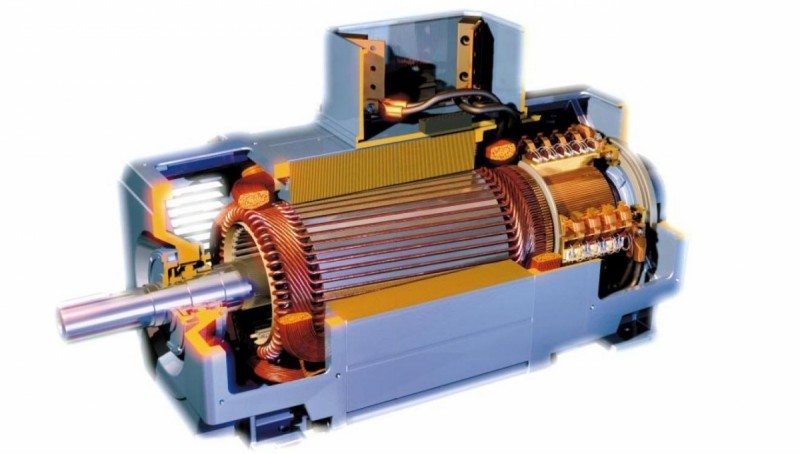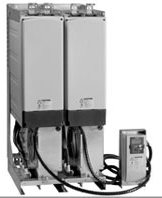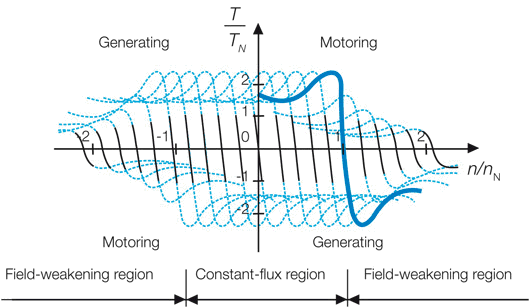Difference From AC and DC Electric Motors
 AC electric motors operate by applying alternating current (AC) power to the electric motor. The main parts of AC electric motors are the stator and rotor. AC electric motors stator consist of coils that are supplied with alternating current power and produce a rotating magnetic field. AC electric motors rotor will rotate inside the electric motor coils and the output shaft produces torque via the rotating magnetic field.
AC electric motors operate by applying alternating current (AC) power to the electric motor. The main parts of AC electric motors are the stator and rotor. AC electric motors stator consist of coils that are supplied with alternating current power and produce a rotating magnetic field. AC electric motors rotor will rotate inside the electric motor coils and the output shaft produces torque via the rotating magnetic field.
There are two different types of AC electric motors and each of them uses a different type of rotor. The first type of AC motor is called an induction motor. Induction motors use a magnetic field on the rotor of an induction motor that’s created by an induced current. The other type of AC motor is called a synchronous motor and rotates precisely at the supply frequency or on a sub-multiple of the supply frequency. Synchronous motors are able to operate with precision supply frequency because it doesn’t reply on an induced current. The magnetic field on a synchronous motor is generated by current delivered through slip rings or a permanent magnet. Synchronous motors run faster than induction motors because the speed is reduced by the slip of asynchronous motors.
DC Electric Motors
 DC electric motors are powered from direct current (DC) power and are mechanically commutated. DC electric motors have a voltage induced rotating armature windings and non-rotating armature field frame coils that are a static field or permanent magnet. DC electric motors use different motor connections of the field and armature winding to produce variable speed and torque outputs.
DC electric motors are powered from direct current (DC) power and are mechanically commutated. DC electric motors have a voltage induced rotating armature windings and non-rotating armature field frame coils that are a static field or permanent magnet. DC electric motors use different motor connections of the field and armature winding to produce variable speed and torque outputs.
DC electric motor speed can be controlled within the winding by changing the voltage sent to the motor armature or by adjusting field frame current. Most DC electric motors today are manufactured to be controlled with industrial electronic DC drives. DC electric motors are used in many applications across the globe such as paper producing machines, steel mill rolling machines and other applications that require variable speed and torque output.
Review
 Direct Current DC motors are usually seen in applications where the motor speed needs to be precision controlled. AC motors work best in applications when performance is needed for extended periods of time. DC motors are single phase and AC motors can be single phase or three phase. AC and DC motors use the same principle of using an armature winding and magnetic field except with DC motors, the armature rotates while the magnetic field doesn’t rotate. In AC motors the armature does not rotate and the magnetic field continuously rotates.
Direct Current DC motors are usually seen in applications where the motor speed needs to be precision controlled. AC motors work best in applications when performance is needed for extended periods of time. DC motors are single phase and AC motors can be single phase or three phase. AC and DC motors use the same principle of using an armature winding and magnetic field except with DC motors, the armature rotates while the magnetic field doesn’t rotate. In AC motors the armature does not rotate and the magnetic field continuously rotates.
DC electric motors are commonly replaced by pairing an AC electric motor with an adjustable frequency speed drive (also known as variable frequency drives, VFD’s, ASD’s, etc). DC electric motors are replaced with an AC electric motor and an adjustable frequency drive as a more economical and less expensive solution to DC motors. DC electric motors have parts that are either obsolete or expensive, so usually it’s less expensive and more efficient to replace a DC motor with an AC motor paired with an AC speed drive.
















